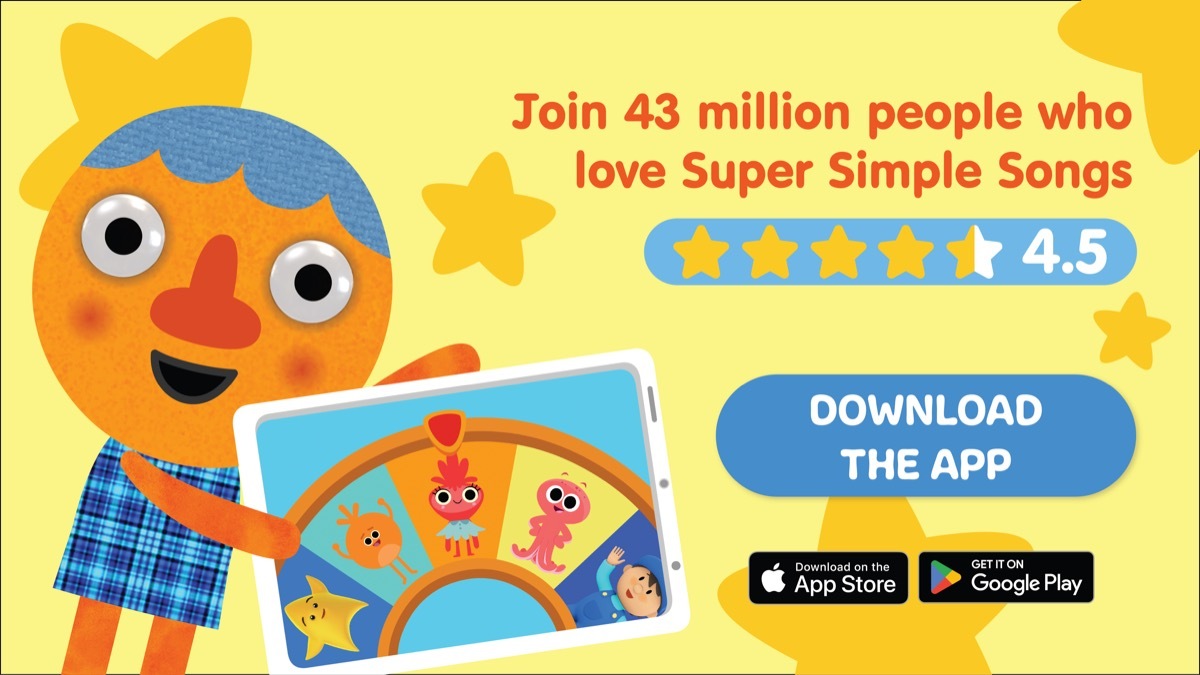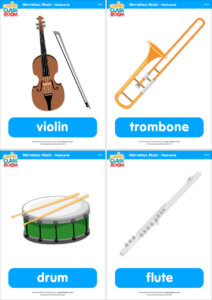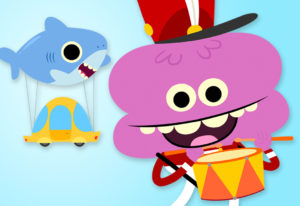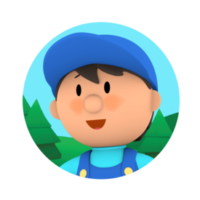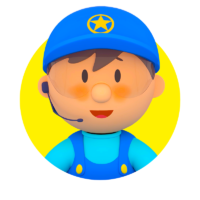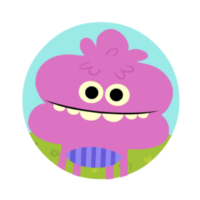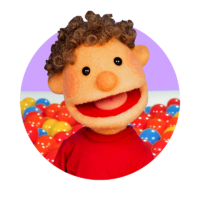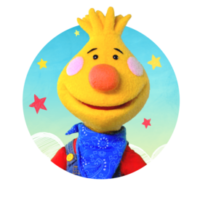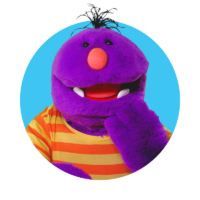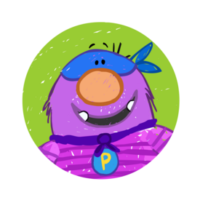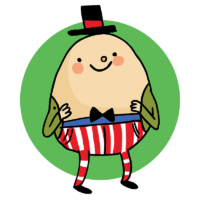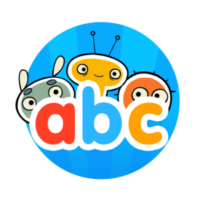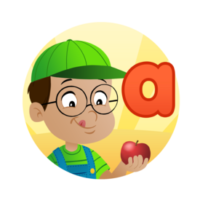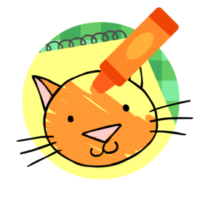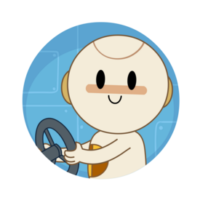Welcome to the classroom! We love to play, learn, create and sing together in the classroom, and we’d like to encourage our classroom friends to keep learning and playing at home once Caitie’s Classroom is over. We’ve put together activities and resources so the playing, learning, creating and singing doesn’t have to stop once Caitie says goodbye. Try these out at home or in your own classroom, and have fun!
It is no secret that we are all music lovers here in the classroom, and this episode is all about musical instruments! We explore different instruments and the sounds they make including drums, band instruments and our own singing voice. We make a homemade crafty guitar that you can really play and visit some young musicians who are learning an instrument for the first time. If you have a little one who wants to learn an instrument, this is a great episode to show them what it might be like. Read on for tips to recreate the classroom activities at home and ideas to expand on them for more learning. Check out our Drum Play activities for some great ideas to engage little ones through rhythm to practice gross motor skills, counting and sensory.
Explore The Xylophone
The xylophone is a super fun instrument that even the littlest of learners can play with. There are some great options for colorful child-friendly xylophones at most toy stores that are also great for practicing colors!
- If you are able to purchase a child-friendly xylophone, little ones can have fun playing on it right away, exploring the sounds.
- Many child-friendly xylophones are color coded – each key is a different color and makes a different sound. You can practice colors by calling out a color and having your little one play that color.
- You can also call out a combination of colors, for example, red-orange-red, and have them play the colors in that order.
- Some child-friendly xylophones come with song cards that show you what keys to play to make a popular song, like Twinkle Twinkle Little Star. Little ones can follow along with the notes on the card to play the song, or you can call out the colors one at a time for them to play to make the song.
- A grown up can also play a song and see if little ones can guess what song it is.
- If you have a piano or keyboard, you can do something similar by putting pieces of tape on the keys with a color or the name of the note.
Discovering Instruments
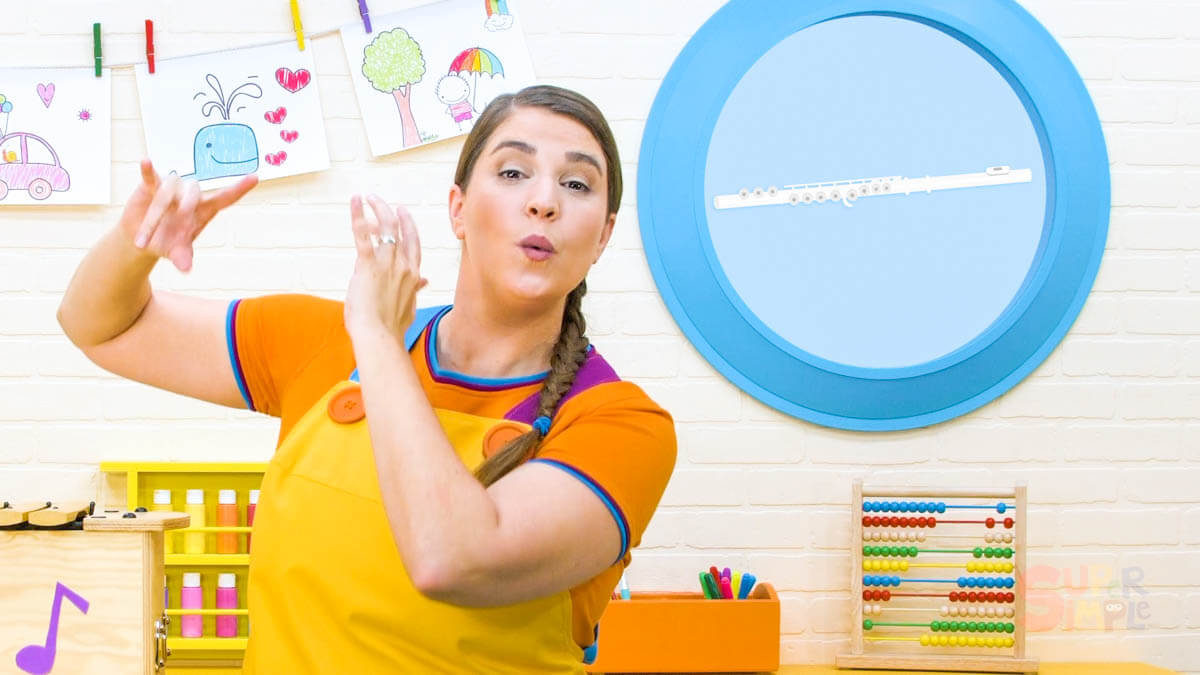
In the classroom we explore the flute, violin and trumpet in some detail. We see an image of the instrument, we hear what the instrument sounds like, then we pretend to play it together. At the end, we hear the three instruments play together and see if we can distinguish the different instruments in the song.
- You can explore other instruments the same way! Find an image of an instrument you’d like to introduce. Often you can find videos of someone playing that instrument, then you can hear what it sounds like and how it is played. Then play the video again, and have your little one pretend to play along.
- Once you have listened to a number of instruments, listen to some different genres of music and see if you can recognize any of the instruments you learned. Try classical, orchestral or jazz music, depending on what instruments you are discovering.
- Piano is a great instrument to start with. It is recognizable in music, and you can find many video options of people demonstrating how to play the piano. Some other great instruments to explore are: drums, saxophone, clarinet, tuba, bass, harp, and cello. To begin your discovery of the cello, check out this field trip of Caitie talking to the young cello player Daniel Hass!
- When The Band Comes Marching In is a great song to discover lots of instruments too!
When The Band Comes Marching In
This is a great song to explore musical instruments and the sounds they make. In this song we explore the drum, tuba, trumpet, trombone, clarinet, flute and cymbal. We get a chance to hear each instrument on its own, and hear what they sound like when they play all together at the end.
- Listen to the song and encourage little ones to pretend to play along. They can march around the room as they pretend to play. You can give them toy instruments to play along with, or they can make some instruments to play – ideas for that coming up below!
- Watch our animated music video to see what each instrument looks like and how it is played, or use our Marvelous Music flashcards, holding up the flashcards when it is that instrument’s time to play.
- Listen to other marching bands or watch videos of marching bands in parades and see if your little one can see and hear the instruments from the song.
- Have your little one draw a picture of each instrument, or a picture of a whole marching band in a parade!
- Make your own parade and get the whole family involved! Get out some hats and march around the house, or even down the street if you’re feeling up for it! Pretend to play instruments, play toy instruments or homemade ones!
Singing The Scale

One instrument we all have with us at all times in our voice. We can use our voice to sing! Before we sing, it is important to warm up. When we warm up our voices we often sing a scale.
- Sing along with Caitie as we sing up and down the scale, and try doing it faster and faster!
- Try singing your own scale as you play along on a piano or keyboard. There are a few good keyboard options online that are free you can try using!
- Try singing scales in different voices! An opera voice, an underwater voice, or a monster voice!
- Try singing lower or higher. How high can you sing? How low can you sing? Can you sing the scale lower or higher?
- Watch our field trip with Caitie when she visits a group of young singers!
Make Your Own Guitar & Other Instruments
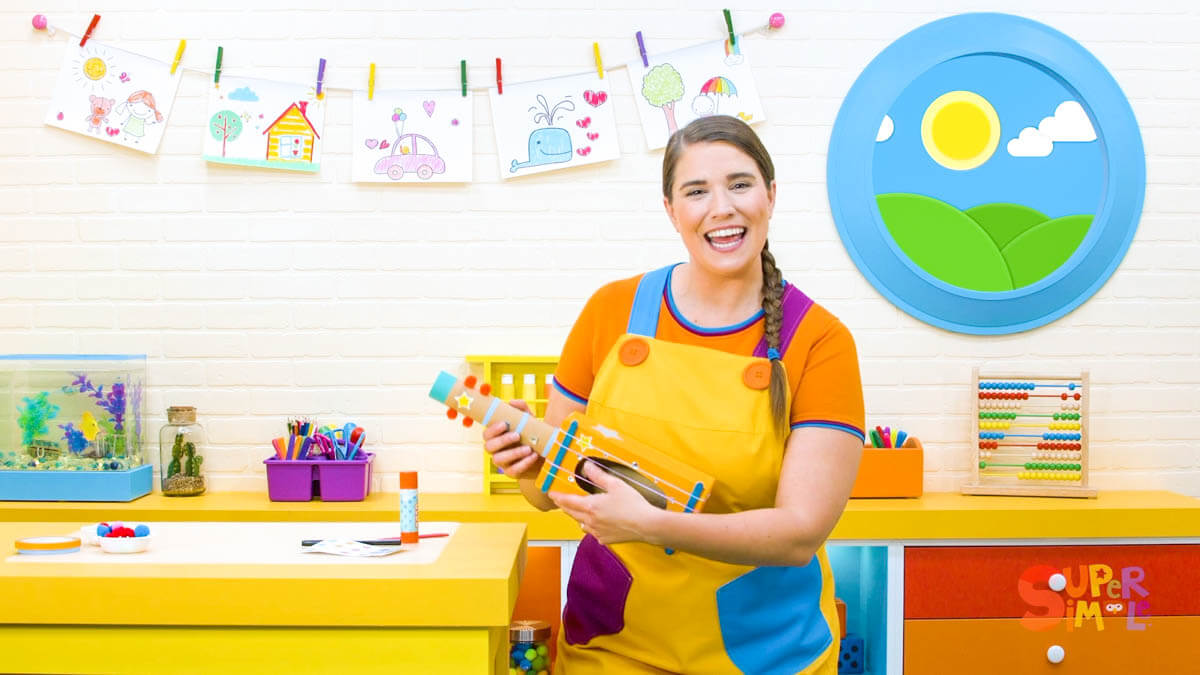
In this episode we make our own homemade crafty guitar. Make your own and follow along with Caitie any time she plays a song on her guitar in the classroom!
- Follow our step by step instructions to make your own homemade guitar.
- Experiment with different kinds of rubber bands on your guitar. – big ones, small ones, thick ones and thin ones, and see what different kinds of sounds they make.
- You can make other homemade musical instruments too! Then you can start a band!
Learning An Instrument
In this episode we take a field trip to an after school music program where young learners are practicing their instruments and learning how to play. If your little one is interested in learning an instrument, this field trip might be especially interesting to them. Learning something new isn’t easy, and it takes a lot of practice to master an instrument. But it can be very rewarding, and learning music is a great way to enhance your skills in many other areas too. Caitie always recommends a ukulele to young learners who are interested in learning an instrument. It can be inexpensive, it is a smaller instrument so it is easier for little hands, and you can make a nice sound without much practice which can be very encouraging. As our young friend says during our field trip, if you want to learn an instrument, “just try it!”
Drum Play
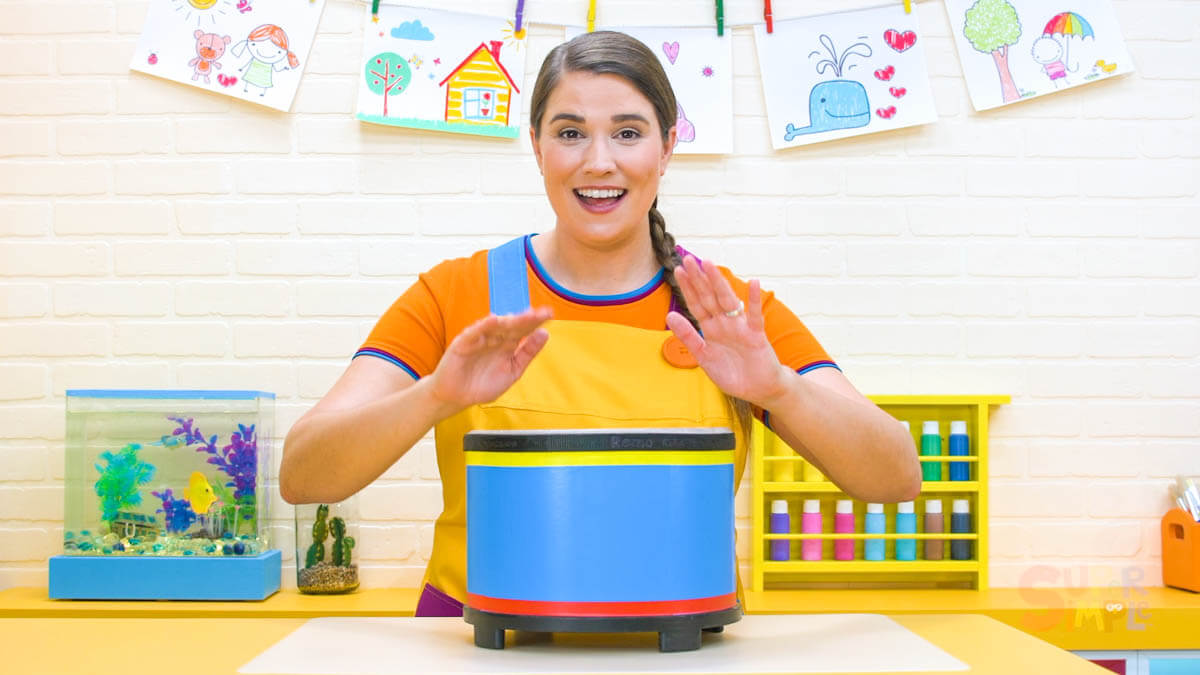
An instrument we can all play around with is the drum! You can use anything for a drum! We use a toy drum found in most toy stores in the classroom, but you can also use a table, your tummy, or a big pot or bowl turned upside down. You can also clap along with any of these drum play activities so you can play along any time, any place.
- Follow along with Caitie at home as she plays the drum in the classroom.
- Start slow and then go faster gradually. See how long it can take you to go from slow to fast and see how fast you can go!
- Play a start and stop game with the drum. A grown up can call out start and stop, or you can play a freeze game by playing and pausing a song. Try playing the drum along with the Super Simple Song Red Light, Green Light.
- Try a ‘repeat after me’ game. A grown up can play a rhythm and have the little ones repeat after them. After you have played a few rounds, see if the little ones would like a turn being the leader.
- Try playing soft and loud on the drum. How do you play different to get the different sounds?
- Try playing different parts of the drum and see what different sound they make. Try the middle, the edges and even the sides!
- A grown up can play a beat and then ask little ones how many beats they played. Little ones will have to count along with the beats, or repeat the beat and count as they go.
- Try pulling out different pots, pans and bowls that are safe to drum on. Turn them upside down and see what different sounds each one makes. Can you make an interesting rhythm using different drums? Start with two and then try adding in more, or have everyone make a different rhythm on a drum and see what they sound like together.
- For some gross motor practice, instead of playing a drum, try stomping your feet. Try any of these activities the same way, but stomping instead of drumming!
We hope you have fun singing, playing, learning, and creating! We love to see photos of our friends having fun in the classroom and of their wonderful creations! You can share them with us through social media or by sending us an email to hello@SuperSimpleOnline.com.
Follow Caitie on Facebook and Instagram!

